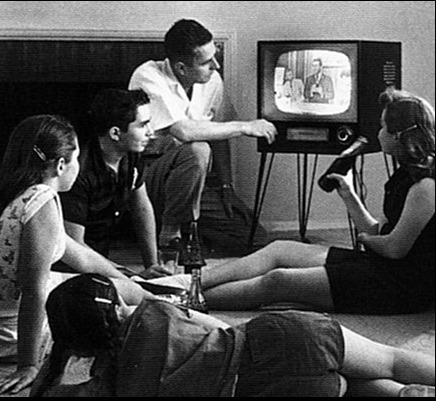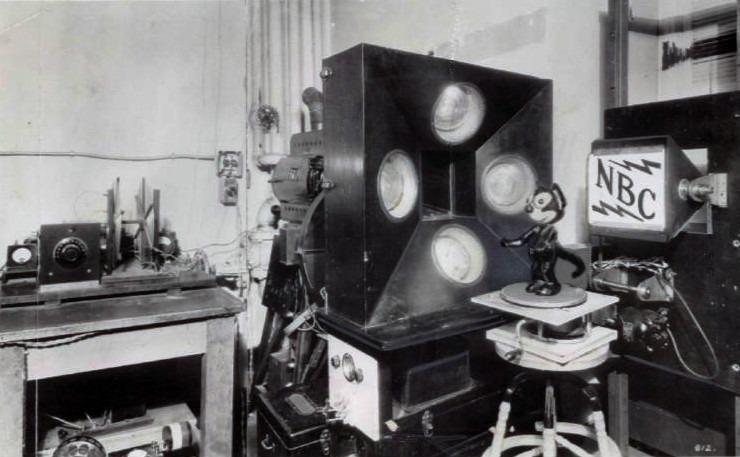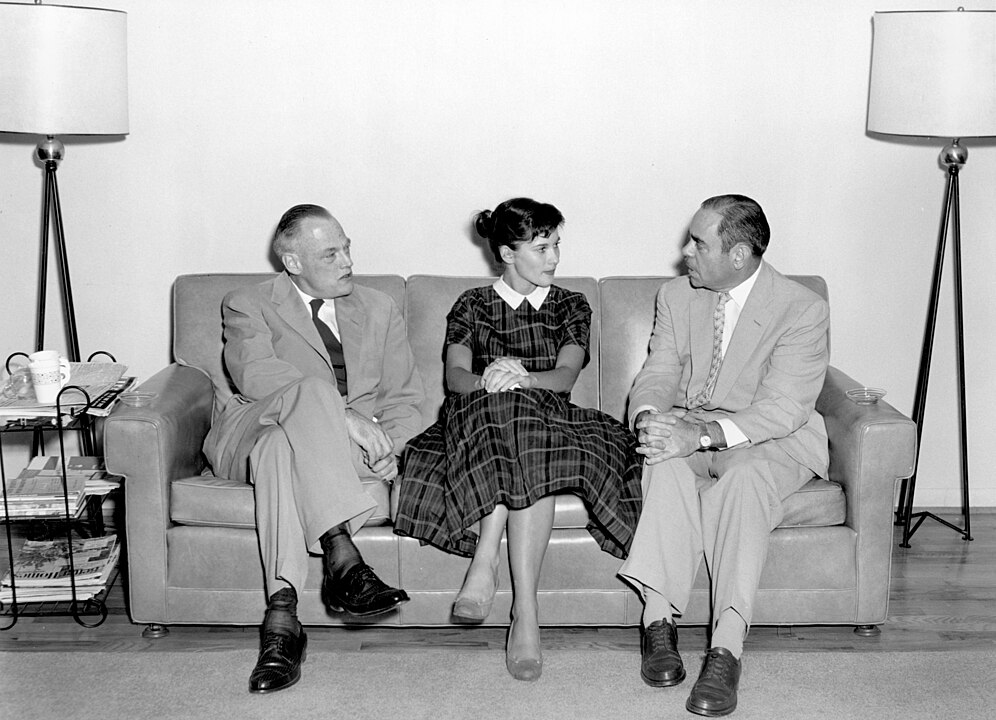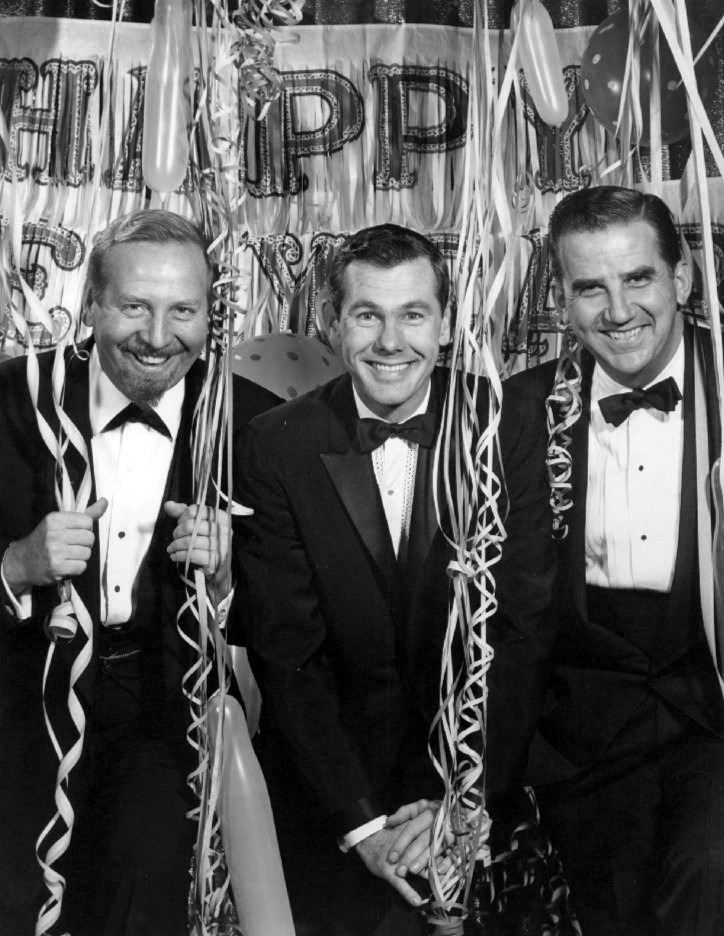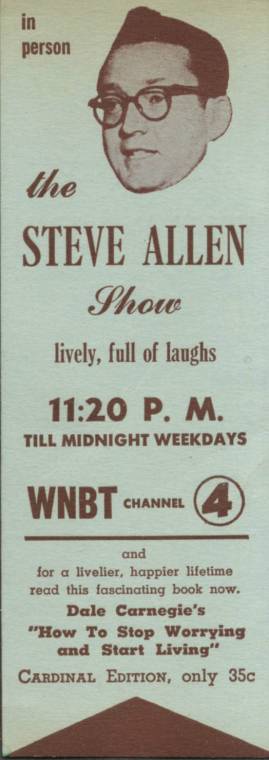The mid-20th century marked a pivotal era in the annals of entertainment history, known as the Golden Age of Television. It was a period characterized by remarkable innovation, unparalleled creativity, and the emergence of television as a dominant cultural force. Central to this transformative epoch was New York City, a vibrant hub that played an instrumental role in shaping the television landscape and propelling the medium into its zenith of influence and artistic achievement.
The Emergence of Television as a Popular Medium in the Early 1940s
The emergence of television as a popular medium in the early 1940s marks a pivotal chapter in the annals of media history, a period characterized by rapid technological advancement and a burgeoning cultural fascination with visual storytelling. This era, while still in the shadow of World War II, bore witness to television’s transition from experimental prototypes to a central fixture in American homes, setting the stage for what would become the Golden Age of Television.
Technological Breakthroughs and Public Demonstrations
The journey toward making television a household staple was marked by significant technological breakthroughs. Key inventors, including Philo Farnsworth and Vladimir Zworykin, made critical advancements in electronic television systems in the late 1920s and 1930s, laying the groundwork for broadcast television. The 1939 New York World’s Fair stands out as a monumental moment, where RCA introduced television to the masses with live demonstrations. These demonstrations captivated the public’s imagination, showcasing the potential of television as a medium for entertainment and information.
The Impact of World War II
The outbreak of World War II in 1939 momentarily halted the commercial expansion of television. Manufacturing resources were redirected towards the war effort, slowing down the production of television sets and the expansion of broadcast infrastructure. However, the war also played a paradoxical role in accelerating the development of television technology, as research and advancements in communication were driven by military needs. By the war’s end, technological and production capabilities had significantly advanced, setting the stage for the post-war television boom.
Post-War Boom and Television Adoption
The end of World War II ushered in an era of unprecedented economic growth and technological optimism in the United States. As American families settled into peacetime, there was a surge in consumer spending, with the television set emerging as a symbol of modernity and comfort. The late 1940s saw a dramatic increase in the number of television stations and the expansion of broadcast networks, making television content more accessible to the American public.
Early Television Content and Broadcasting Milestones
The content of early television was heavily influenced by existing entertainment forms, particularly radio and theater. Many of the initial television programs were adaptations of popular radio shows, leveraging familiar formats and personalities to attract viewers. Live broadcasts of drama, variety shows, and musical performances became staples of early television programming, showcasing the medium’s unique ability to bring real-time entertainment into living rooms across the nation.
Notable early broadcasting milestones include the first official television broadcast by NBC’s WNBT (now WNBC) in New York City on July 1, 1941, which featured a baseball game between the Brooklyn Dodgers and the Philadelphia Phillies. This broadcast not only marked the beginning of commercial television in America but also highlighted New York’s central role in the medium’s development.
New York as a Production Hub
New York City’s ascension as the heart of television production during the early days of the medium was not coincidental but a result of its already established status as an entertainment and cultural epicenter. The city’s infrastructure, teeming with studios and networks, alongside a rich pool of artistic talent, positioned it perfectly to lead the television revolution.
Concentration of Television Studios and Networks
At the forefront of New York’s television production landscape were iconic establishments like NBC’s 30 Rockefeller Plaza and CBS’s Television City. These studios were not merely physical spaces for filming but were symbolic of the innovative spirit that defined television’s golden era. 30 Rockefeller Plaza, also known as the RCA Building, became the cradle of American television, hosting an array of pioneering broadcasts and becoming synonymous with NBC’s television production. Similarly, CBS’s Television City contributed significantly to the medium, producing a variety of shows that captivated audiences nationwide.
These studios were equipped with state-of-the-art technology and facilities that allowed for the production of live broadcasts, a hallmark of early television programming. The ability to produce and broadcast live events, dramas, and variety shows directly from New York added a dynamic and immediate quality to television that pre-recorded programs could not match.
Migration of Talent from Radio, Theater, and Film to Television
One of New York’s greatest assets in its rise as a television production hub was its deep reservoir of artistic talent. The city had long been a magnet for creatives in radio, theater, and film, making it a natural transition for many to move into television as the new medium gained popularity.
Radio veterans, accustomed to the demands of live broadcast and audio storytelling, found new opportunities in television to expand their craft into the visual realm. Their experience was invaluable in the early days of television, where live programming dominated, and the ability to engage audiences solely through audio was complemented by visual storytelling.
The theater community, particularly Broadway, provided a rich source of actors, directors, and writers who brought a depth of character and narrative sophistication to television programming. The live aspect of television in its early years resonated with the theatrical community, for whom live performance was second nature. This synergy between theater and television led to the creation of televised plays and dramas that brought the essence of Broadway into American living rooms.
Innovative Programming and Genre Development
New York City’s indelible mark on the Golden Age of Television extended far beyond its role as a mere production hub; it was a crucible of creative innovation that fundamentally shaped the medium’s content and form. The city’s vibrant cultural scene, combined with its rich pool of artistic talent, fostered the development of new programming formats and genres that have since become cornerstones of television.
Live Television Drama
One of the most significant contributions of New York to television was the evolution of live television drama. Series such as “Playhouse 90” and “Kraft Television Theatre” revolutionized television by presenting a diverse mix of dramatic narratives, from modern societal challenges to historical tales. These shows, characterized by their theatrical quality, were performed live, mirroring the vibrancy and immediacy of Broadway productions, yet they reached audiences nationwide through television broadcasts.
The live television drama format served as a launchpad for numerous playwrights, directors, and actors, many of whom would later become luminaries in Hollywood and the broader entertainment industry. The intensity and pressure of live broadcasts demanded a high level of skill and creativity, fostering an environment where talent could truly shine and innovate. These dramas were not only entertainment but also a form of art, bringing complex characters, intricate plots, and important social themes to the forefront of American consciousness.
Variety Show Format
Another genre that New York City perfected during the Golden Age of Television was the variety show. Programs like “The Ed Sullivan Show” became staples of Sunday night television, offering a smorgasbord of entertainment that included music performances, comedy sketches, acrobatics, and even appearances by popular movie stars and Broadway performers. These shows were a testament to the eclectic and vibrant nature of New York’s entertainment scene, encapsulating the city’s diverse cultural offerings in a single program.
“The Ed Sullivan Show,” in particular, is remembered for introducing America to a wide range of artists and acts, from the breakthrough performance of Elvis Presley to the historic American debut of The Beatles. The variety show format highlighted the power of television to bring diverse forms of entertainment into the living room, making celebrities and cultural phenomena accessible to the general public.
Pioneering New Genres
Beyond drama and variety, New York was instrumental in pioneering other television genres. The city’s intellectual and literary circles contributed to the development of panel shows and quiz shows, which combined entertainment with intellectual discourse and competition. Programs such as “What’s My Line?” and “The $64,000 Question” engaged viewers with their combination of humor, intellect, and intrigue.
Moreover, New York’s comedy scene, deeply intertwined with the city’s theater and nightclub circuits, laid the groundwork for television comedy as we know it today. Early sitcoms and comedy shows often drew upon the talents of New York-based comedians and writers, infusing television comedy with a distinctive blend of humor, satire, and social commentary.
The Impact on News and Journalism
New York’s influence on the Golden Age of Television was not confined to entertainment; it was also a pivotal force in the evolution of news and journalism. The city’s dynamic role in this transformation can be encapsulated through several key points:
- Global Media Capital: As a global media capital, New York was home to the major broadcast networks like CBS, NBC, and ABC, which played crucial roles in the development of television news. The city’s international connections and access to news sources around the world made it an ideal location for the headquarters of these influential networks.
- Pioneering Evening News: Networks based in New York pioneered the concept of the evening news broadcast, which became a staple in American households. Programs like the “CBS Evening News” and “NBC Nightly News” set the standard for national news coverage, offering a daily digest of national and international events in a format that was both accessible and informative.
- Iconic Journalists: New York was the base for some of the most iconic figures in television journalism, including Edward R. Murrow and Walter Cronkite. Murrow’s reports during World War II and his later television work, including the groundbreaking series “See It Now,” exemplified the potential of television journalism to influence public opinion and policy. Cronkite, known as “the most trusted man in America,” anchored the “CBS Evening News” for nearly two decades, guiding the nation through historic events such as the Kennedy assassination and the Apollo moon landing.
- Live Coverage and Breaking News: The ability to broadcast live from New York allowed networks to cover breaking news with an immediacy previously unattainable. This capability was dramatically demonstrated during events like the Cuban Missile Crisis and the Civil Rights Movement, where live reports and images brought the urgency and reality of these situations into American living rooms, fostering a new level of public engagement with current events.
- Visual Impact: Television added a visual dimension to news that had been largely absent in radio broadcasts, changing the way stories were told and understood. The visual impact of seeing events unfold, from political protests to wars abroad, added a powerful layer to storytelling that deepened public awareness and empathy.
- Investigative Journalism: New York-based news programs began to experiment with longer-form investigative journalism, tackling complex issues in depth. This was a significant departure from the brief news items typical of early television news, offering viewers a more nuanced understanding of significant social, political, and economic issues.
- Cultural and Political Commentary: Beyond straight news, New York also became a center for cultural and political commentary, with programs like “The Tonight Show” and “Meet the Press” offering platforms for discussion and debate on current issues, further blurring the lines between news, entertainment, and public discourse.
Cultural and Social Influence
The Golden Age of Television, with New York City at its helm, was not just an era of entertainment innovation but also a time of significant cultural and social dialogue. The programming of this era, deeply intertwined with the city’s diverse cultural fabric, played a pivotal role in reflecting and shaping the societal consciousness of the time.
- Mirror to Society – Television shows produced in New York during this period served as a reflection of American life, capturing the complexities and nuances of the urban experience. From the gritty realities of the working class depicted in dramas to the glamorous lives of the elite in sitcoms and variety shows, television offered a window into the diverse lifestyles and challenges faced by different segments of society.
- Narratives of Diversity and Complexity – The melting pot of New York, with its rich blend of cultures, ethnicities, and social classes, provided a vibrant setting for storytelling. Television became a medium through which the stories of immigrants, minorities, and the marginalized could be told, albeit within the constraints and conventions of the time. This diversity in storytelling helped to broaden viewers’ perspectives and foster a deeper understanding of the American social fabric.
- Addressing Social Issues – The television programming of the era often ventured into the territory of social commentary, addressing pressing issues such as racial inequality, poverty, and the tensions of the Cold War era. Shows like “The Defenders” and “East Side/West Side” tackled controversial topics head-on, challenging viewers to confront and reconsider their own prejudices and beliefs.
- Breaking Taboos and Pushing Boundaries – In an era when certain topics were considered taboo for broadcast, New York-based shows pushed the boundaries of what was deemed acceptable. This bold approach to storytelling not only captivated audiences but also ignited discussions around dinner tables and water coolers, contributing to the slow but steady shift in public attitudes and norms.
- Educational Impact and Awareness – Beyond entertainment, television became a tool for education and awareness, introducing viewers to different cultures, historical events, and scientific advancements. Documentaries and news programs, many of which were produced in New York, played a crucial role in informing the public about the world beyond their immediate surroundings.
- Influence on Public Opinion and Policy – The power of television to shape public opinion became increasingly evident, with the medium influencing perspectives on everything from political candidates to consumer products. The televised Nixon-Kennedy debates, for example, highlighted the impact of television on politics, underscoring the medium’s potential to sway public perception and, ultimately, policy.
The cultural and social influence of New York’s television programming during the Golden Age was profound and far-reaching. By offering narratives that reflected the complexity of society, addressing pressing social issues, and challenging existing norms and taboos, television became a catalyst for dialogue and change. This period laid the groundwork for the medium’s ongoing role as a mirror to society, a forum for debate, and a force for social progress.
Legacy and Transformation – New York’s Enduring Influence on Television
The transition from the Golden Age of Television into the subsequent era marked a significant shift in the locus of TV production from New York City to Los Angeles. This movement was propelled by the television industry’s evolution from live broadcasts to filmed content, which necessitated the vast spaces and consistent weather conditions that Los Angeles could offer. Despite this geographical shift, New York City’s imprint on the television landscape remained indelible, a testament to its foundational role during television’s formative years.
New York’s Persistent Role
Even as the epicenter of television production moved, New York City maintained its status as a critical hub for certain television genres. The city continued to thrive as the go-to location for news programming, talk shows, and live television events. Iconic programs such as “Saturday Night Live” and “The Tonight Show” (before its temporary move to Los Angeles and subsequent return) have kept the tradition of live television vibrant in the heart of the city. New York’s unique energy, its bustling streets, and its emblematic skyline have provided an unparalleled backdrop that studio sets elsewhere struggle to replicate.
Collective Memory and Nostalgia
For generations of viewers, New York City, as depicted in classic television shows, holds a special place in the collective memory. The representation of the city’s streets, its diners, apartments, and parks, has contributed to a shared cultural nostalgia that transcends the actual geography of New York. This nostalgia is not only a longing for the shows themselves but also for the era they represent—an era when New York City was the undisputed heart of the television universe.
Ongoing Evolution and Innovation
Today, New York continues to adapt and evolve in its relationship with television. With the advent of streaming platforms and the resurgence of high-quality, serialized content, the city has once again become a pivotal player in the industry. New shows, while benefiting from technological advancements and modern storytelling techniques, still draw on the rich legacy of New York’s television history, ensuring that the city’s influence endures even in the face of an ever-changing media landscape.
Conclusion
New York City’s role in the Golden Age of Television was multifaceted and profound. As a breeding ground for talent, a center for innovation, and a stage for groundbreaking programming, the city helped to define an era of television that remains golden in the annals of entertainment history. The legacy of this period, marked by creativity, innovation, and cultural impact, continues to influence television production and storytelling, underscoring the enduring significance of New York in the narrative of this transformative medium.

